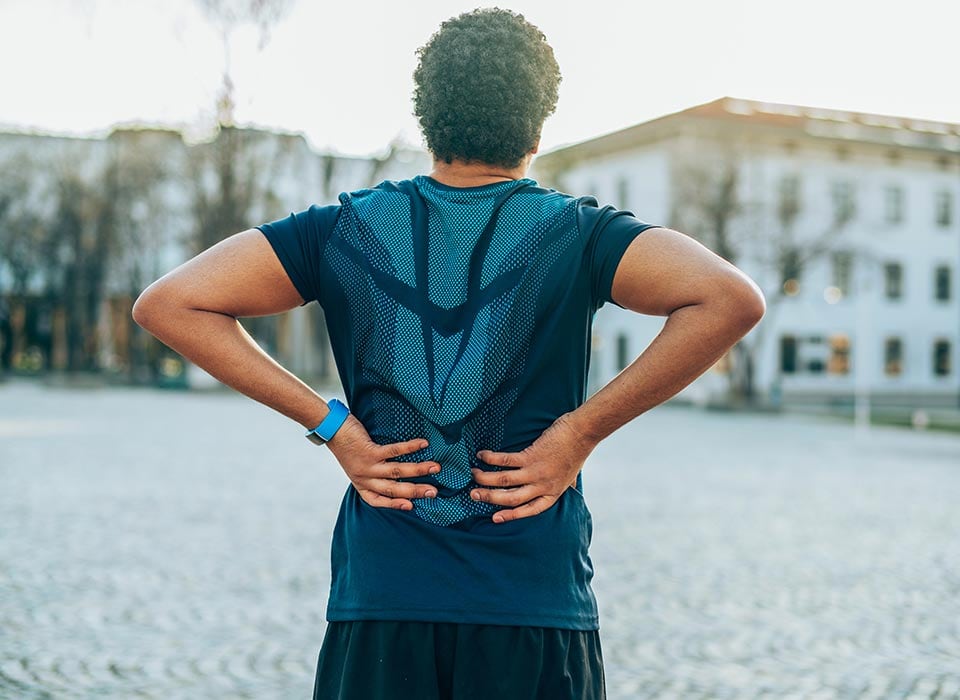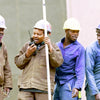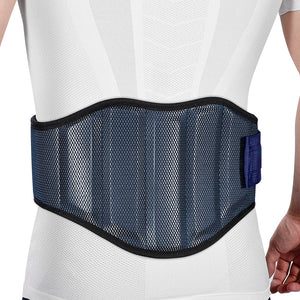How Long Does It Take for a Lower Back Brace to Work

Acute pain relief can occur within minutes to a few hours, while chronic issues may require days to weeks. The brace should be worn with moderate tightness for 2-3 hours at a time to avoid prolonged dependence, with the best results seen when paired with appropriate exercises.
How It Works
The functions to provide support, stability, and distribution of pressure to the lumbar spine and spinal column. This external support limits mobility within the lumbar area through minimizing excessive flexion or extension and rotational movements for the protection of the soft tissue and joint structures located in the lower back, thus preventing secondary injury. Specifically, a lower back brace can distribute the body's weight onto other areas of the body besides itself, thereby minimizing the amount of stress the body places on the lumbar spine and, subsequently, easing pressure on the intervertebral discs. Such pressure dispersion is greatly beneficial in the case of herniated discs, muscle pulls, and scoliosis.
By providing lumbar stability, the brace acts to help in pain control. In this context, "stability" includes "active stability" and "passive stability." Whereas active stability depends mainly on muscle support, passive stability provided by the brace supports soft tissue effectively in order to avoid frequent small pulls of muscles. The brace also helps to maintain good spinal alignment and reduces additional stress on the injured area. This support of the brace is effective in conditions of prolonged sitting, standing, or doing repetitive movements of bending.
Moreover, the brace can increase the local temperature of the lumbar region and thus promote blood flow. When an area warms up, soft tissues and joints relax; thus, the delivery of nutrients and minerals becomes easier, promoting a faster rehabilitation process of the muscular fibers. This temperature rise can also relax muscle spasm and decrease pain resulting from muscle fatigue. Some studies have concluded that a moderate rise in temperature of the lower back has beneficial effects on promoting local blood circulation, which is particularly useful for fresh muscle strains or chronic overuse injuries. The lumbar spine will be able to recover bit by bit through the support, stability, and warmth provided by the brace.
When to Expect Relief
Relief time varies from the person's condition, kind of brace used, and how it is worn. The acute pain patients may include those who have sudden muscle strains or short-term pain after lifting any heavy object. The brace may provide noticeable relief within minutes to hours of wearing. It can alleviate pain by movement right away by providing extra support for the lower back and facilitating the patient in doing daily activities more easily.
For patients who have chronic lower back pains, the advantages of the brace may only manifest after days to weeks for those with a history of poor posture for many years, muscle tiredness, and degeneration of the joints. Chronic pain often involves complex issues of muscle fatigue and joint stress, issues that are difficult or impossible for a brace to fully relieve in a short period of time. Relief for the patient is typically incremental: first, the frequency and intensity of pain gradually diminish, followed by progressive improvements in range of motion and freedom of movement.
Being more serious, herniated discs or scoliosis are conditions where the use of the brace itself is not treatment but rather symptomatic. It offers stability at the lumbar region and painless support to patients; thus, such categories of patients do benefit with such braces by finding gradual relief after weeks or even months of use. It is during this time that the advice of the physician must be implemented hand in hand with the brace, along with physical therapy and training for the muscles in the core, to improve the general condition of one's lower back.

Choosing the Right Brace
The success in wearing a lower back brace largely lies with whether one selects the right type. Generally, there are three kinds: elastic braces, rigid braces, and semi-rigid braces. Elastic braces are made from soft materials. These are suited for mild support needs and can also be worn to relieve pains resulting from poor posture or mild muscle fatigue. The elastic ones will give moderate pressure support but without undue restriction of movement; hence, they are good for wearing while one undertakes his or her usual work or chores.
Rigid braces are made from hard plastic or metal support bars and are primarily used for postoperative recovery, severe herniated discs, and huge muscle strains that really need high stability. These braces limit extreme movements of the lumbar, ensuring that the lumbar spine and spinal column is not burdened with unnecessary tension during recovery. Rigid braces are relatively more suitable for the early stages of recovery that can prevent sudden or violent movements from causing a secondary injury. When you wear a rigid brace, you will want to tighten it with the aid of a professional for maximum support.
The semi-rigid orthosis presents an advantage of both elastic and rigid by providing a perfect balance that could be ideal for the patient to offer moderate support while not having severe restrictions in movement. Most of these designs have some hard bars as support and flexible materials that provide range-of-motion activities while offering support. Semi-rigid orthoses are indicated in chronic discomfort of the lumbar region due to daily activities or as a support in the later stages of post-surgical recovery.
The size, the fitting, and the material of the brace are important. It should just , as proper fitting directly relates to the effectiveness and comfort level of support by the brace. If it is too tight, it could impair blood circulation, which could cause local discomfort or even heighten pain. High-breathe materials, especially braces with antibacterial and deodorizing liners, give more comfort during longer wear. Therefore, it is highly recommended to use high-breathability braces for sensitive patients or when the wear needs to be for a long time in order to avoid stress on the skin.
Wearing Tips
The brace needs special attention in terms of so that it can work well. The lumbar support brace, in general, should be worn during times of aggravated pain or when one is to undertake some activities such as sitting, standing, or even lifting heavy weights for some time if possible. During office work, or if someone is about to engage in long drives or heavy lifting, for instance, the brace can effectively reduce pressure on the lumbar region. It should be positioned slightly below the waist, supporting the upper structure of the pelvis, in a manner that eliminates the mobility of the lumbar during flexion.
The wearable brace should be moderately tight without being too tight. A brace that is too tight would permit limited local flow of blood that may eventually cause insufficient oxygenation, numbness, and even damage to organs internally. Tightness should be controlled to avoid affecting breathing while continuing normal activities. Position and tightness of brace are adjusted according to lumbar requirements for different posture; with activity, the brace shifts in position over a period and may thus require periodic checking and readjustment.
Whereas in terms of wearing time, every wear is indicated for approximately 2-3 hours and then be rested to give the lumbar muscles time to relax. Moreover, to avoid excessive reliance on the brace that leads to deterioration of the muscles. For mild lower back pain patients, the best condition can be when the brace is worn during the day and discarded at night in order to have rest. For more serious chronic pain or postoperative convalescence, it is necessary to regulate the time worn progressively according to medical suggestions. Continuous wearing for a long time is not recommended in order to avoid increasing dependence of muscles.
Common Mistakes
Common mistakes in wearing a lower back brace include the following:
-
Over-reliance on the brace: Many patients hope the brace may replace all support functions of the lower back muscles, believing that if they wear it, then the pain will just disappear. That notion is wrong. The brace is an accessory; relying on it too much will weaken the muscles of the lumbar region. Training core muscles is very important for long-term pain relief in the lower back. Muscle atrophy from using a lumbar brace for a long time will bring inadequate muscle strength and worsen the pain.
-
Wearing it too tightly: Because some users may have the idea that the tighter the better. At this time, an overtightened brace makes the local blood flow insufficient and may even provoke new pains. A suitable fitted brace should be able to support the lower back without being too tightly set.
-
Prolonged continuous wear: That is, continuous use of the brace, especially wearing it around the clock, will make one overly dependent on it and further weaken the original support function of the lumbar muscles. In general, the duration of brace wear should not be over 4 hours with rest intervals during daily activities.
-
Incorrect posture when wearing: Poor posture, especially over the wearing period, may impact the overall effectiveness and efficiency of the brace's support. For example, when the support does not cover the lumbar spine sufficiently, it cannot provide sufficient support to the area. Altering the position of wear of the brace to better fit over the lower back and pelvis.
Duration of Use
The time for will vary according to specific individual differences and the severity of the condition. Acute pain is often usually prescribed to wear continuously for a couple of days at the start and until such time as pain has significantly subsided, after which time the wearing time is gradually reduced. An acute pull or strain in the patient may be well-protected with this brace in its first days, with the frequency of use reduced as symptoms begin to subside.
Such brace support may be longer for patients with chronic pain, especially when their daily activities have high intensities. Normally, recommendations are that one should wear braces in high activity periods while daily wearing time is reduced gradually. The most common recommendation is the use of a brace for 2 to 4 weeks, after which time the periods of wearing should be shortened until the time when it will be used only during specific activities.
In patients with postoperative recovery or spinal deformity, the duration of wearing an orthopedic brace should be in accordance with a specific doctor's recovery plan and might take months or even longer to wear. The brace offers very high support during the period of recovery, while once the spinal stability is recovered, its frequency of use is gradually reduced to enable muscles to recover the ability of autonomous support.
Signs of Progress
However, after some time, the following effects of the brace can be noticed: pain relief, mainly a feeling of comfort in everyday activities while bending and lifting. The improvement itself points to the supportive character of the brace and a gradual normalization of the load of both lumbar muscles and joints. Stiffness and fatigue in this segment decrease as time goes by, whereas the range of motion increases.
This stability that the brace provides effectively reduces the periodic recurrence of pain. The lesser the number of episodes of pain, the less is the requirement of the brace, and activities no more need to be deliberately conducted by avoiding lumbar movements
-
Posted in
Back pain causes, Brace, Healthy Lifestyle














